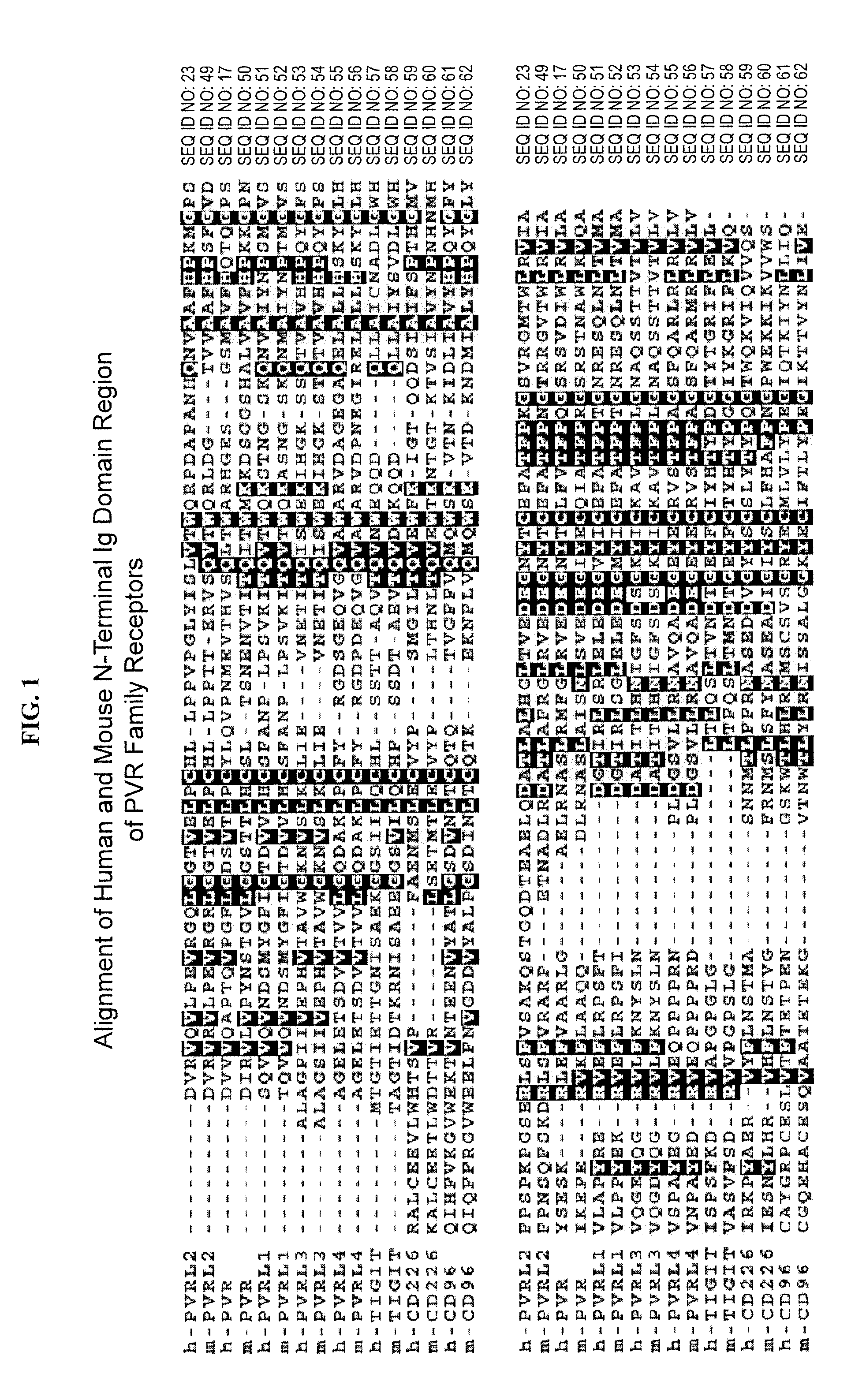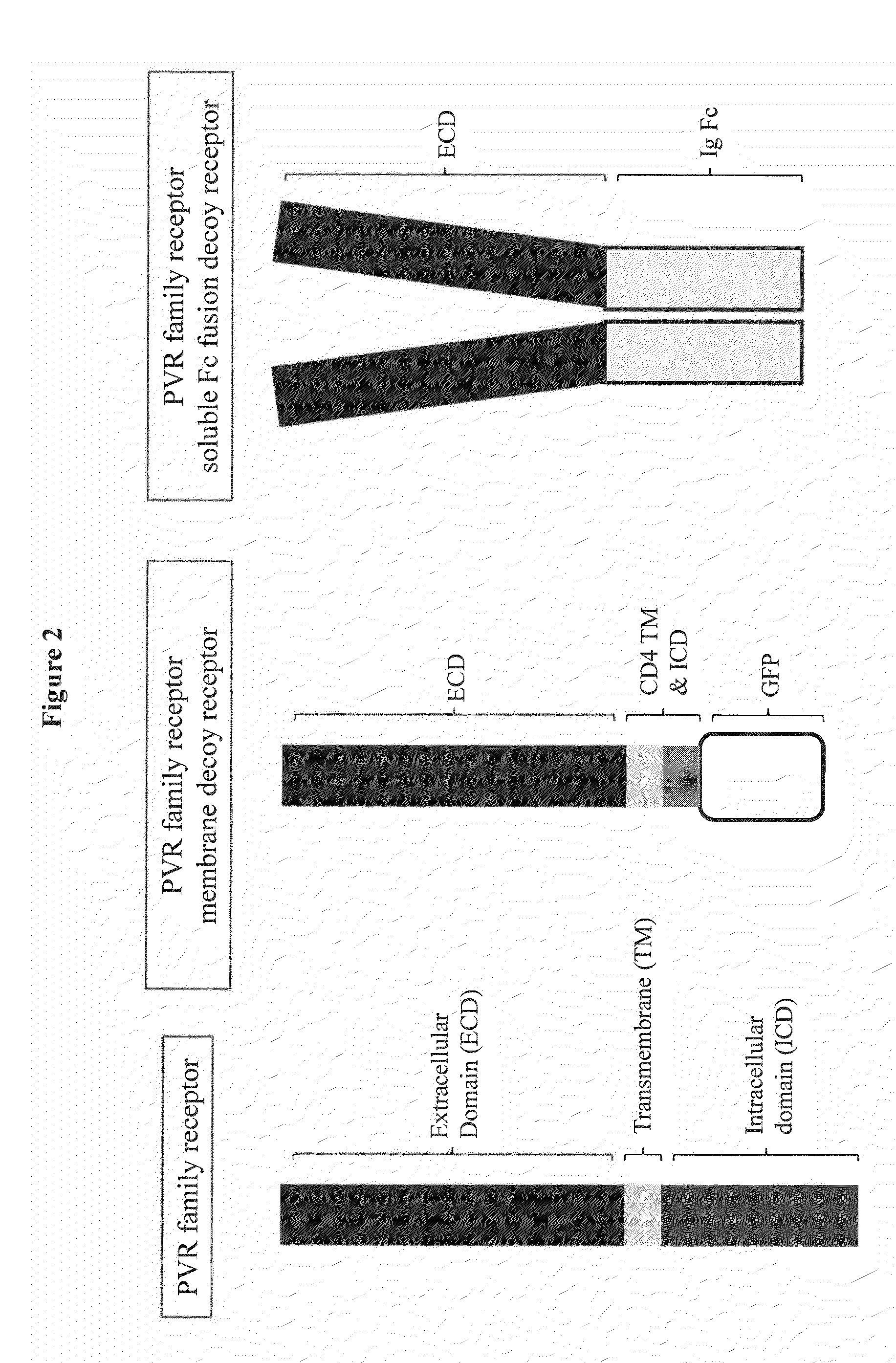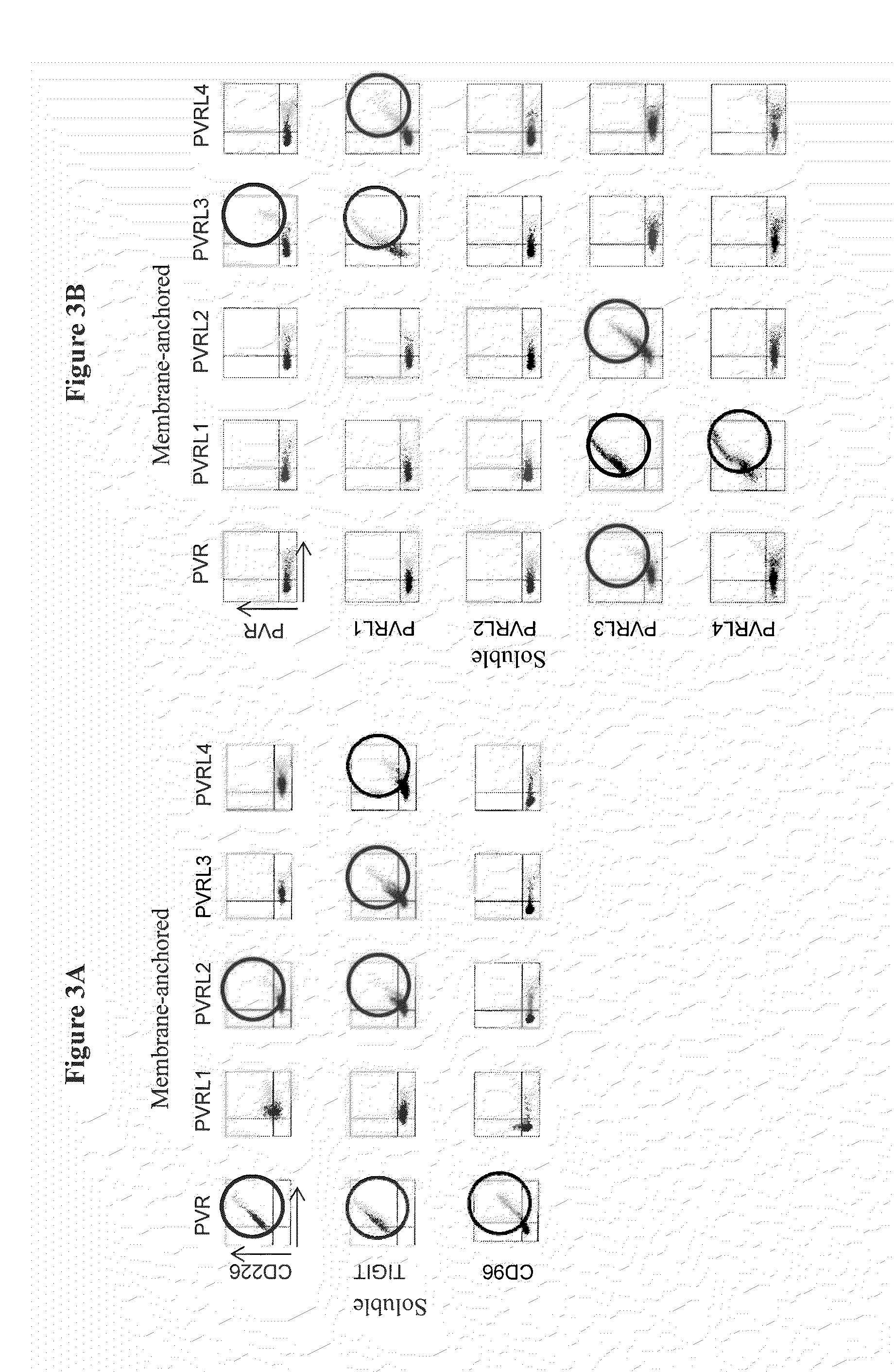Immunotherapy with binding agents
- Summary
- Abstract
- Description
- Claims
- Application Information
AI Technical Summary
Benefits of technology
Problems solved by technology
Method used
Image
Examples
example 1
PVR Family Constructs
[0230]Protein constructs of PVR family members TIGIT, CD96, CD226, PVRL1, PVRL2, PVRL3, PVRL4, PVR, and PVR variants were prepared including membrane-anchored proteins and soluble receptors (FIG. 2). Each membrane-anchored receptor was designed to be non-functional in regard to signaling, as the transmembrane and cytoplasmic domains were replaced with the human CD4 transmembrane domain and an intracellular green fluorescent protein (GFP) tag. The membrane-anchored protein constructs were generated by ligating at least one domain of the extracellular domain (ECD) of a human PVR family protein to the transmembrane domain of CD4 and a C-terminal GFP protein tag using standard recombinant DNA techniques. These constructs are referred to as “PVR family member”-CD4TM-GFP, for example PVR-CD4TM-GFP. The soluble receptors were designed to include at least one domain of the ECD linked to an immunoglobulin Fc domain. The soluble receptor PVR family protein constructs were...
example 2
Binding Interactions Between PVR Family Members
[0232]The binding interactions among members of the PVR family were examined by flow cytometry. Each of the family members was expressed both as an Fc fusion protein containing at least one domain of the ECD of the receptor fused to the Fc region of human IgG1, and also as an membrane-anchored form containing at least one domain of the ECD of the receptor fused to a human CD4 transmembrane region and an intracellular green fluorescent (GFP) protein tag (see Example 1).
[0233]Individual potential binding interactions were assessed by transfection of HEK-293T cells with an expression vector encoding a specific membrane-anchored receptor (PVR, PVRL1, PVRL2, PVRL3, or PVRL4), and then examining the ability of a specific receptor-Fc fusion protein (CD96, TIGIT, or CD226) to bind to the transfected cells. HEK-293T cells were transiently transfected with a cDNA expression vector encoding PVR-CD4TM-GFP, PVRL1-CD4TM-GFP, PVRL2-CD4TM-GFP, PVRL3-CD...
example 3
Generation of PVR Variants
[0235]The crystal structure of PVR bound to TIGIT has been previously disclosed (see, Stengel et al., 2012, PNAS, 109:5399-5404). The structure was examined and residues within PVR that appeared to not be critical for TIGIT binding, but might potentially impact the binding of CD226 or CD96 were selected. These residues are highlighted in FIG. 4. A cDNA expression library of variant human PVR N-terminal IgV domain molecules was designed and generated in which amino acid positions 65, 67, 72, 73, 74, 81, 82, 84, and 85 (SEQ ID NO:18) were individually substituted with all twenty amino acids. The cDNA expression vector encoded the N-terminal IgV domain of PVR fused to a CD4 transmembrane domain and a green fluorescent protein (GFP) tag. The expression vector plasmid also contained a bacterial ampicillin resistance gene. The cDNA library of variant PVR molecules was transfected into CAP-T cells in the presence of a 100-fold excess of an irrelevant vector lackin...
PUM
| Property | Measurement | Unit |
|---|---|---|
| dissociation constant | aaaaa | aaaaa |
| dissociation constant | aaaaa | aaaaa |
| dissociation constant | aaaaa | aaaaa |
Abstract
Description
Claims
Application Information
 Login to View More
Login to View More - R&D
- Intellectual Property
- Life Sciences
- Materials
- Tech Scout
- Unparalleled Data Quality
- Higher Quality Content
- 60% Fewer Hallucinations
Browse by: Latest US Patents, China's latest patents, Technical Efficacy Thesaurus, Application Domain, Technology Topic, Popular Technical Reports.
© 2025 PatSnap. All rights reserved.Legal|Privacy policy|Modern Slavery Act Transparency Statement|Sitemap|About US| Contact US: help@patsnap.com



